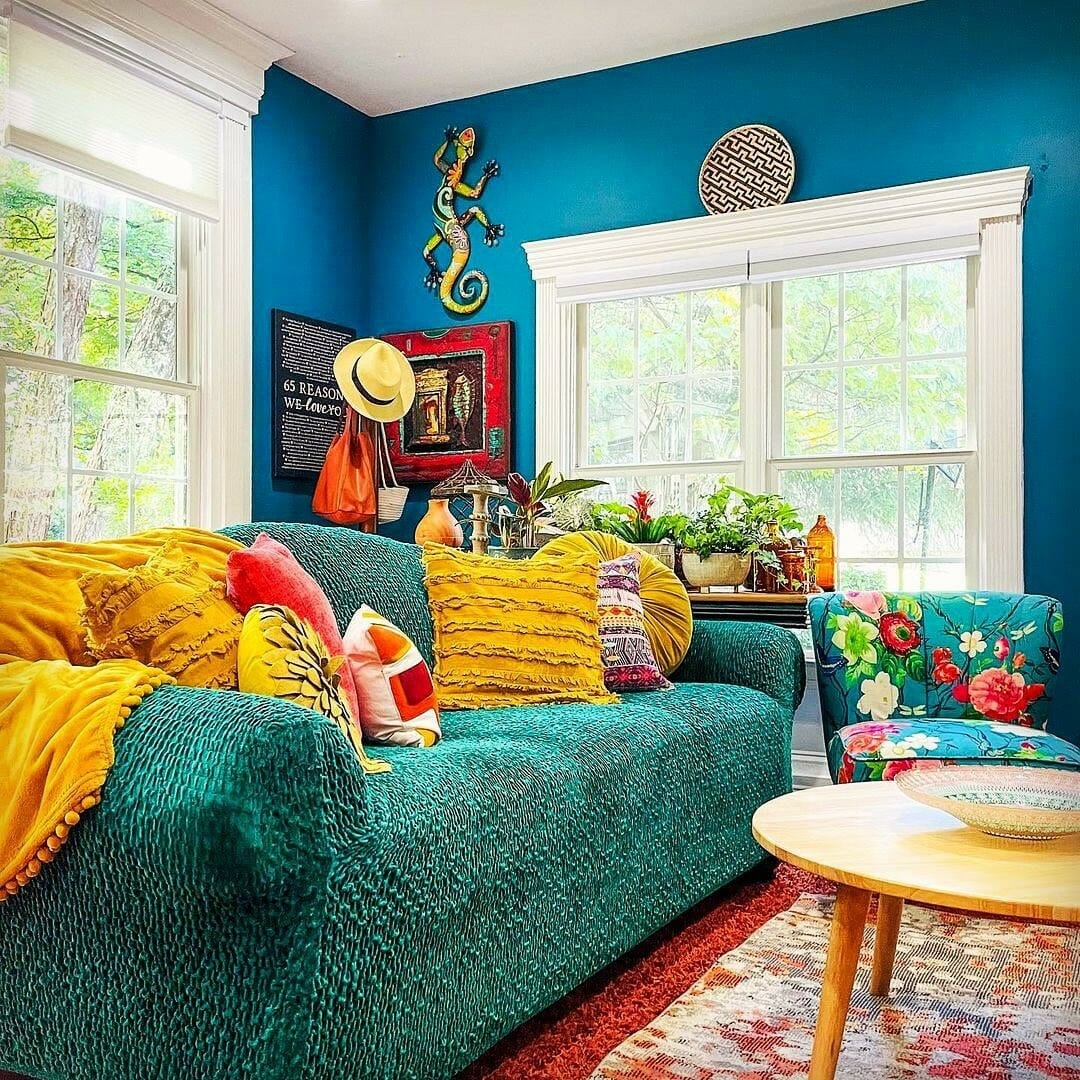It might seem that nothing could be simpler than putting couch covers on a sofa. However, tons of search queries from people asking how to install sofa covers on the furniture the right way prove quite the opposite. Whether you’re one of those people or just come here to discover some tips, this easy 3-step tutorial may come in handy.
1. Measure Furniture for a Slipcover
Measuring your furniture is an important step to getting a slipcover of the correct size. Before you start to look at upholstery fabrics, what you want to do first is to take the width, length, and height of your sofa. The width is measured from one arm to the back of the sofa, the length is measured from one arm to another, while the height is simply the distance from the bottom to the top. Once these numbers are written down, you can use them as a guide when buying a slipcover.
Note, though, that furniture isn’t made equal, and neither are slipcovers, so if your couch has a custom design, a few more measurements may be required. Luckily, some of the covers are designed to be fitted to different sofa brands, making them a surefire option for virtually everyone.
2. Put a Slipcover on Your Sofa
In most cases, sofa slipcovers come with the manufacturer’s instructions detailing how to install them. This is because slipcovers can have different designs or be made from different fabrics. For instance, some are designed to cover only the part of the couch acting as a rug, while others may have a fairly loose bottom or come with ties and zippers. Depending on the model, the instructions may differ slightly.
Normally, though, the process goes along the lines of this: you should place the slipcover over your sofa’s upper back corner, ensuring that the upper corners have been covered entirely. Then cover the seating area: each corner of the slipcover should meet the designated arm of the couch. Finally, secure each corner under the lower edges of the couch using ties or elastic straps. If everything is done right, the slipcover should take the shape of your couch perfectly.
3. Finish the Installation
At the final stage, all you really need to do is remove wrinkles by smoothening the material of the slipcover and return your throw pillows to the sofa to improve its look. When it comes to slipcovers, you may find it a bit harder to find the one that sits perfectly and doesn’t slide up from in between the cushions, because even those that come with foam tubes can sometimes slip out. This is where it might be a good idea to buy a set of cushion covers separately that will fit your cushions beautifully and keep everything nicely in place.
Which Cover Fabric Will Fit Your Furniture Best?
Not sure which type of fabric you’d like to wrap your furniture in? Well, you’re not alone. With so many options available, it’s quite easy to get confused. However, knowing the strengths and weaknesses of different materials will surely guide you in the right direction.
Cotton
Cotton is a favorite choice for many people for a few reasons. First and foremost, it’s not very expensive, which makes it quite easy to replace when you get bored with it. Secondly, it’s a stretchy fabric, so it should provide a snug fit and hold its shape perfectly even after years of use. Besides, thanks to the nature of cotton, it’s the easiest to color, meaning it is available in a wide range of design options to choose from.
Microfiber
Microfiber slipcovers are usually moderately priced, similar to cotton, and come in a slew of color options, making it easy to style them along the interior of your room. They also have a high level of wrinkle resistance and stand the test of time. Microfiber covers can also be safely cleaned in a washing machine.
Velvet
If you love the tactile feel of the fabric, you can’t go wrong with velvet. This fabric looks luxurious and has an inviting feel that can add a cozy vibe to just about any dwelling. On top of that, contrary to the popular misconception, velvet slipcovers are stain resistant and easy to clean, allowing dirt to be brushed off in just one swipe. They aren’t exactly cheap, but if you’re looking to bring a more luxe look to your home, velvet ticks the box perfectly.
Wool
The best thing about wool is its self-cleaning properties, which means you won’t need to wash it all that often. In addition, wool is a natural material, making it safe for all households. Another advantage of wool is that it allows you to introduce texture to your living room. So if you want to accentuate the neutral colors of your interior such as beiges, grays, or browns, a wool slipcover can be a way to go.
Leather
Leather slipcovers have many advantages, including their durability, improved comfort, ease of maintenance, and functionality. They also have the advantage of blending in beautifully with any home decor. Aside from that, leather is known for its ability to retain the shape for years to come, making it a great pick for those looking for a high-quality slipcover that will pay off in the long run.
Now that you know what type of fabric suits your interior best and putting slipcovers doesn’t look all that tedious, it should be quite easy to transform your home into the place you’ve always wanted it to be. Don’t be afraid to experiment, and you’ll be amazed by the outcome!




